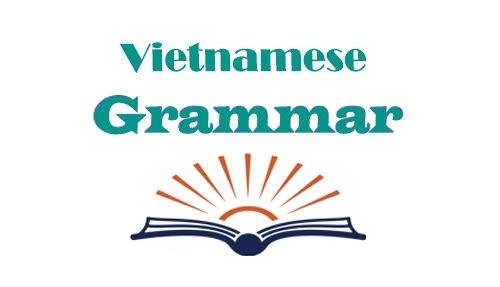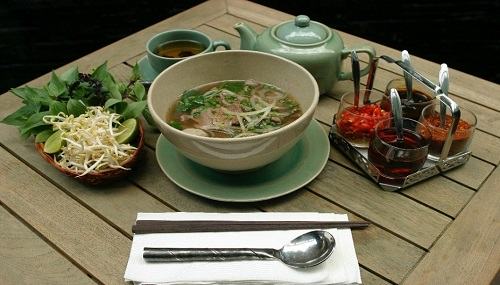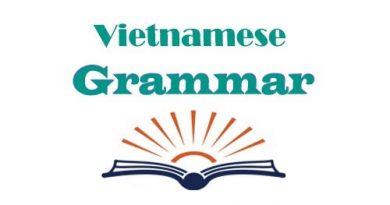How to use “là” in Vietnamese
The word “là” can be a noun, a verb, a conjunction or an adverb. It’s often used in Vietnamese. In this post, Tiengviet24h will introduce to you: How to use “là” in Vietnamese. Let’s start!

When “là” is a noun
+ “là” refers to fine silk. This meaning is rarely used now, it is only used in idioms (such as “quần là áo lượt”) and literature.
+ “là” refers to an equipment for making clothes flat and smooth (iron).
When “là” is a verb
“là” means to make clothes flat and smooth using an iron
Example:

Trang brags about her boyfriend to her friends: “Anh ấy là cả quần áo cho tớ đấy.” (He iron my clothes)
“là” is synonymous with “ủi” (it’s often used in the Southern of Vietnam).
“là” refers to the act of moving from high to low and gliding along a flat surface
This meaning is often used in writing.
Example:
Two friends on the plane are waiting for the plane to land. They say: “Máy bay là xuống thấp rồi.” (The plane is skimming down)

Comparison
| Máy bay là xuống thấp rồi. | Máy bay sắp chạm mặt đất rồi. |
| –> “là” is used correctly, but there are few people using this expression. | –> This expression is more common. |
“là” is a verb indicating the identical relation
In this case, “là” can’t stand alone. There must be a clause behind “là” so that the sentence is meaningful.
Structure : Subject + là + postposition.
This structure is a basic structure of a simple narrative. It is used widely in both speaking and writing.
In some cases, “là” can be synonymous with “làm”, especially when talking about job.
Example:
When introducing yourself to the landlord: “Cháu làm kĩ sư ở Việt Nam hai năm rồi ạ.” (I’ve been an engineer in Vietnam for two years)
You can use “là” in this case.
But in the following examples, you can’t replace “là” with “làm”.
Example:
+ James teaches English in a high school, he introduce himself to students: “Chào các em, tôi là James, là giáo viên tiếng Anh mới của lớp ta.” (Hello everyone. I’m James. I’m your new English teacher)
+ James introduces his girlfriend to his friends: “Cô ấy là bạn gái của tớ.” (She is my girlfriend)
+ James took pictures of landscapes in Viet Nam and posted them on facebook with caption: “Đây là quê hương thứ hai của tôi.” (This is my second hometown)
When “là” is a conjunction
The pairs of conjunctions hễ – là, đã – là, nếu – là indicate the condition – result relation.
Example:
Lisa tells her friends about prevention and isolation of Covid in Vietnam: “Nếu về từ vùng dịch là phải đi cách ly.” (You must go to the isolation ward if you come from endemic areas)
nếu – thì also indicates the condition – result relation, but the result is not required.
Comparison
| Nếu về từ vùng dịch thì phải đi cách ly. | Nếu về từ vùng dịch là phải đi cách ly. |
| –> People need to go to the isolation ward, but the mandatory level is not high. | –> When using “là”, the result “to go to the isolation ward” becomes highly compulsory. When all the conditions are met, the result must happen. |
“là” is synonymous with “rằng”, it indicates that what the speaker is going to say is the content of what has been mentioned before
In this case, “là” is used when the speaker wants to report what someone else has said.
Example:
+ James confides in his friends after having a fight with his girlfriend: “Cô ấy nói là cô ấy muốn chia tay.” (She said that she wanted to break up with me)

+ Lisa tells Chen about the embassy’s response about the return flight during the Covid pandemic: “Đại sứ quán nói là chúng ta cần theo dõi trang web chính thức và chờ đợi thông báo mới.” (The embassy said that we need to follow the official website and wait for new announcements)
In above cases, we can replace “là” with “rằng”, but “rằng” is often used in writing. You can also combine two words into “rằng là” which is often used in speaking.
You can omit “là”, “rằng” or “rằng là”, the sentence is still natural.
When “là” is an adverb
“là” is used to emphasize the nuance of the degree when being used with repeated words
Example:
+ This is the first time Chen has eaten pho, he comments: “Món ngày ngon ơi là ngon.” (This dish is very delicious)

Comparison
| Món này ngon. | Món ngày ngon ơi là ngon. |
| –> This is a normal comment. | –> Using “là” (ơi là) between the two words “ngon” shows that the speaker is extremely impressed with pho. |
Other way to say: “Món này ngon ngon là.”
“This is a casual expression. It can be used when joking, complaining or being sarcastic. If Chen wants to praise pho, he shouldn’t use it.
+ James had a fight with his girlfriend. His girlfriend said: “Tôi là tôi biết bộ mặt của anh rồi!” (I know your real face)
Comparison
| Tôi biết bộ mặt của anh rồi. | Tôi là tôi biết bộ mặt của anh rồi! |
| –> The speaker understands the listener well. | –> The speaker emphasizes that she understands the listener very well. This sentence shows the anger and disappointment of the speaker. |
“là” is placed before an adjective to show subjective comments of the speaker
Example:
Chen tells his friends about the life in Viet Nam: “Ở Việt Nam thực phẩm rẻ lắm, tiền ăn chẳng đáng là bao.” (The food is very cheap in Viet Nam, it doesn’t cost too much to buy food there)

Comparison
| Tiền ăn không tốn. | Tiền ăn chẳng đáng là bao. |
| –> This is an objective comment of the speaker. | –> When “là” is placed before “bao”, the comment of the speaker becomes a subjective comment. |
Above is: How to use “là” in Vietnamese. See other similar posts in category : Vietnamese grammar
We on social : Facebook
